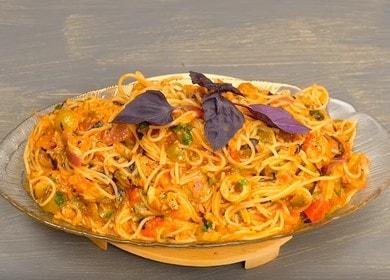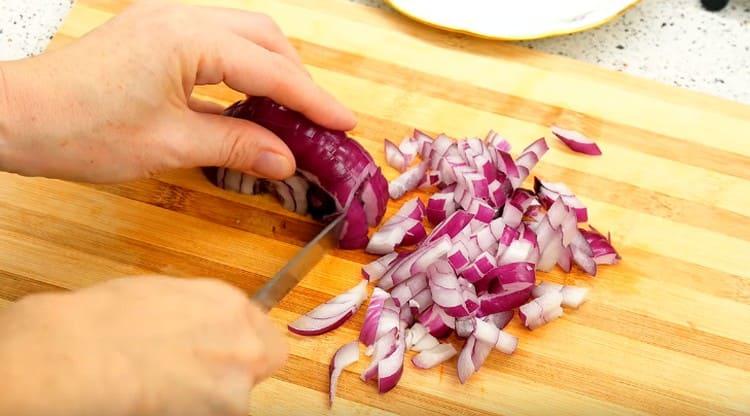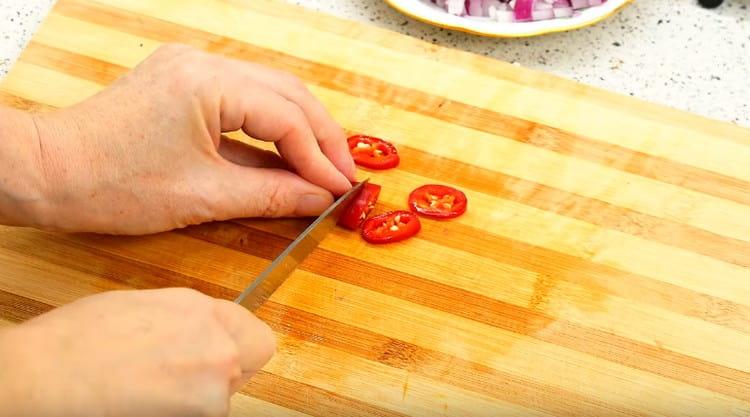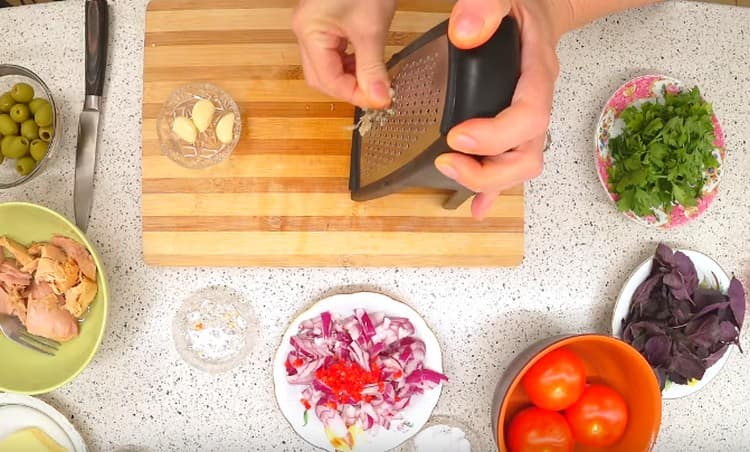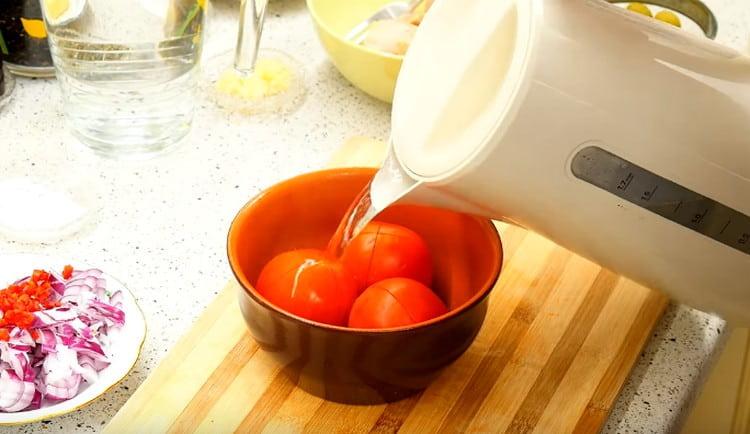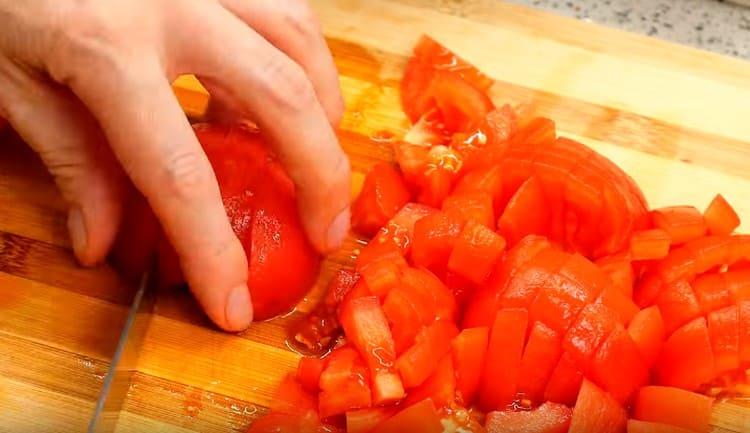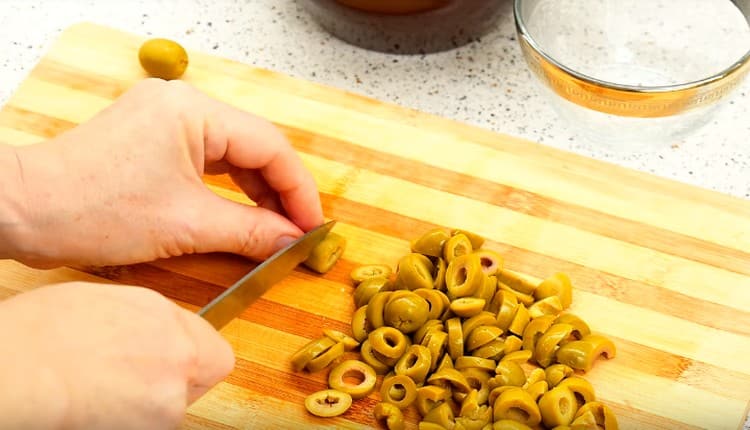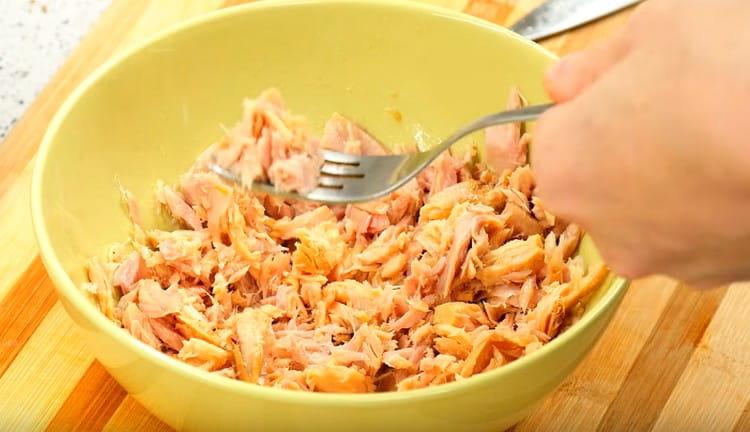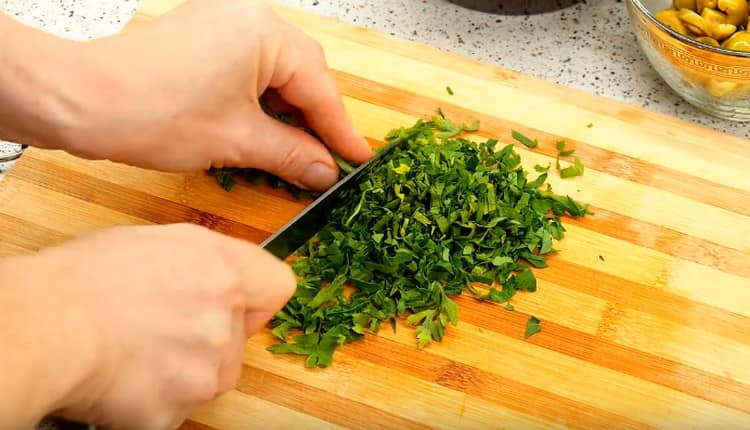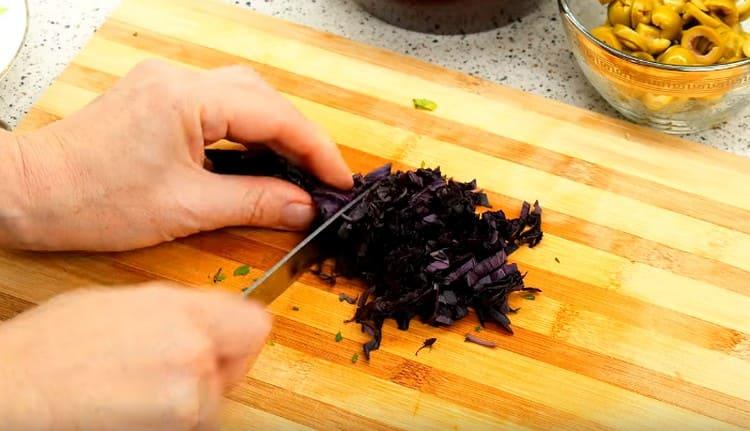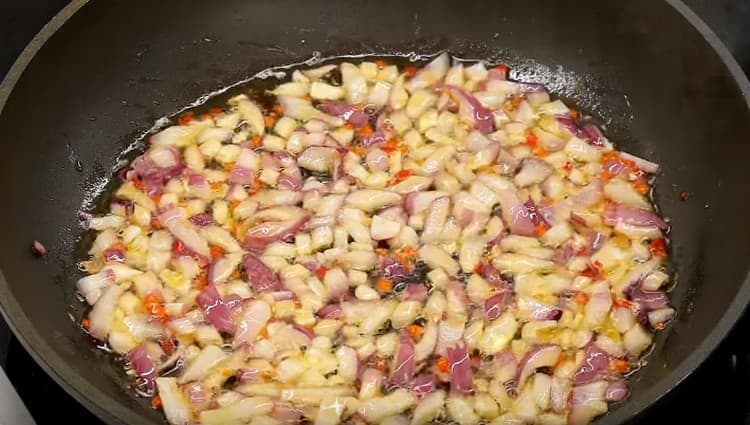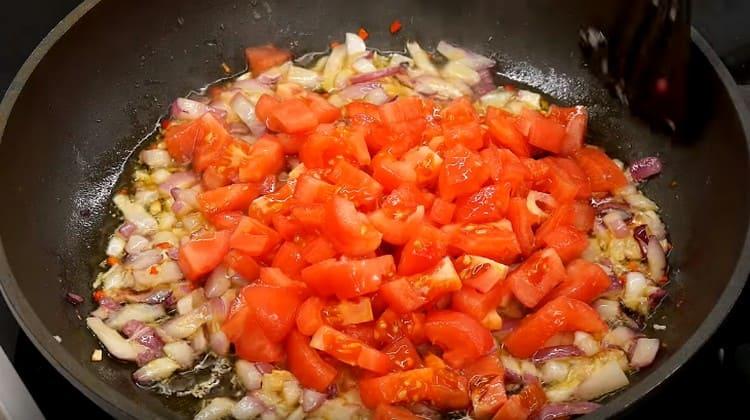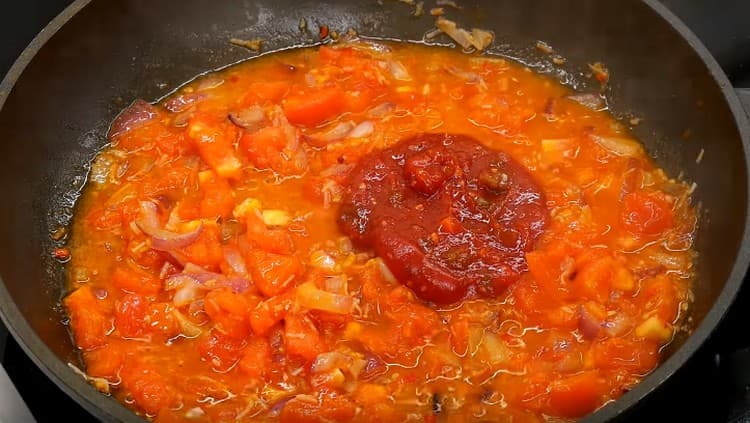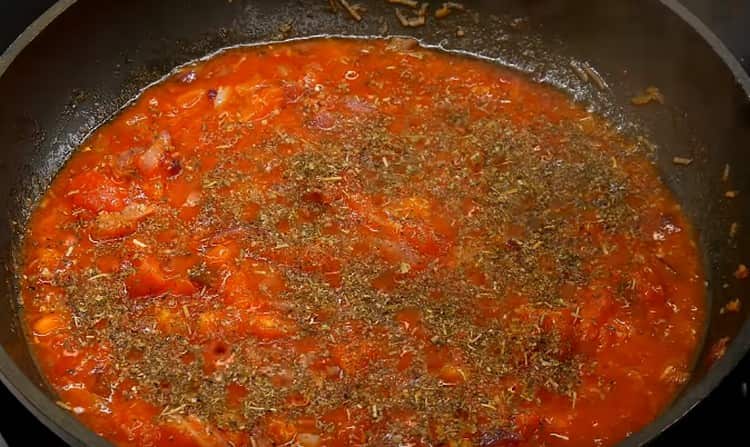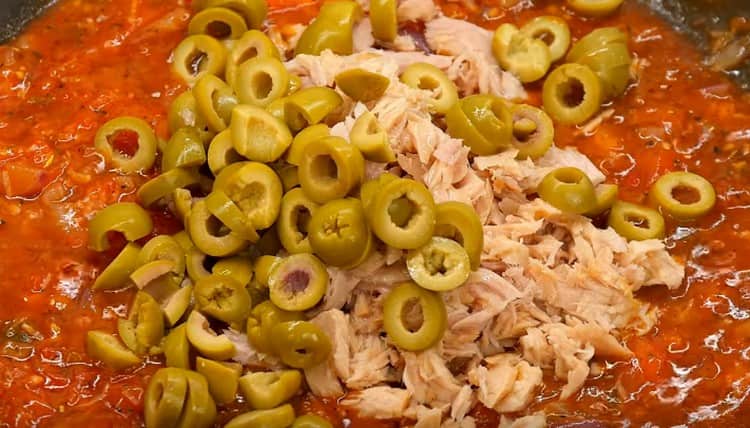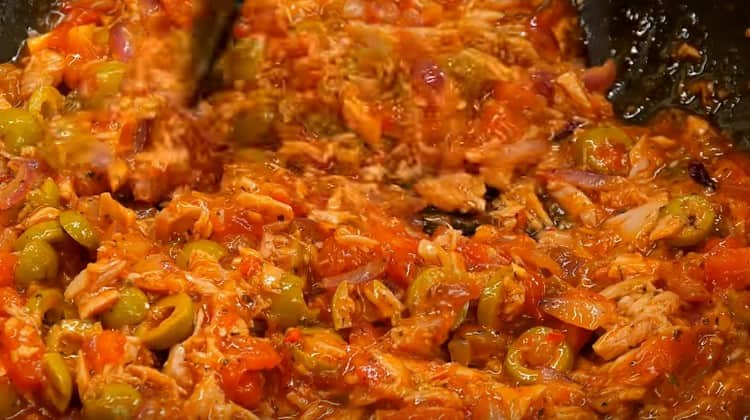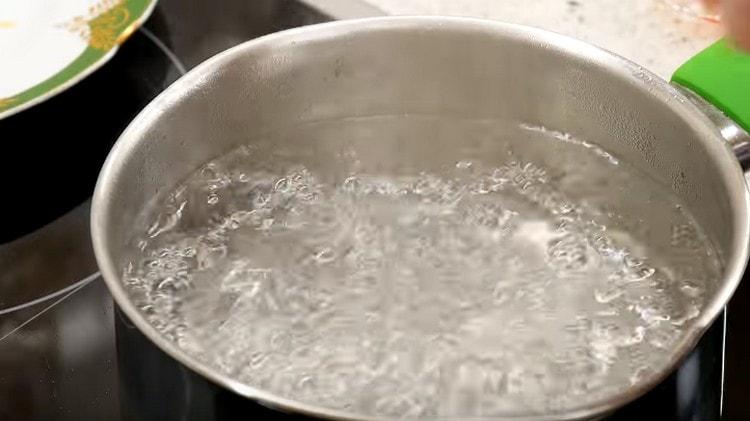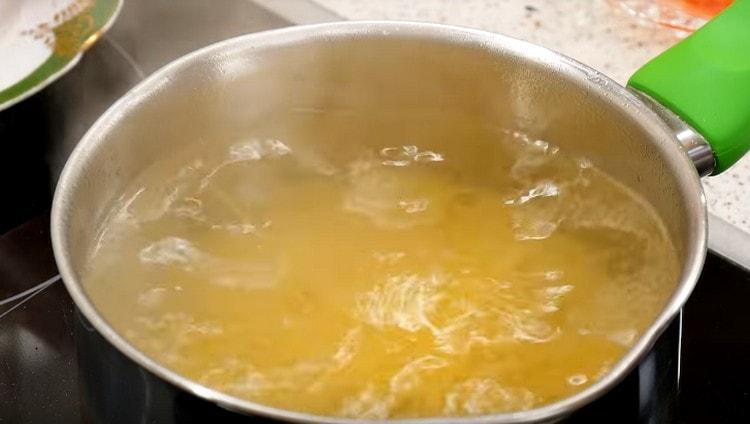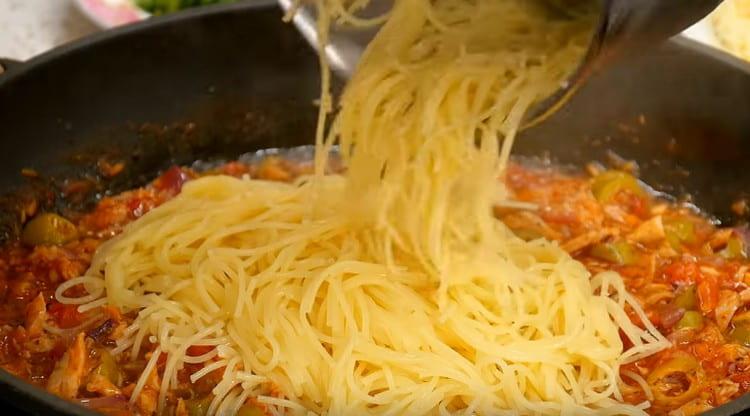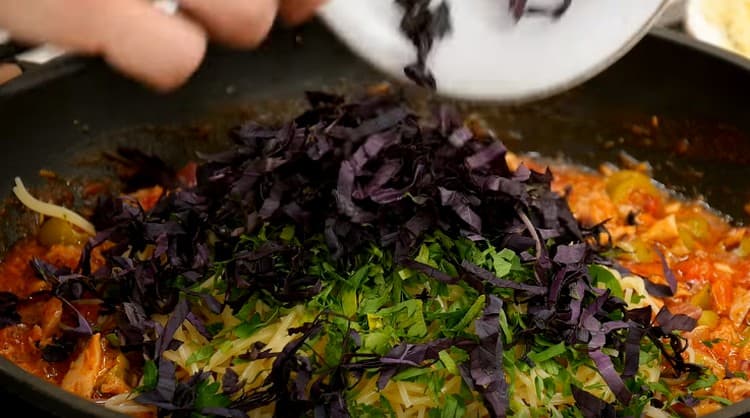Kitchen appliances and utensils:
- plate;
- cutting board;
- knife;
- fine grater;
- a bowl;
- teapot;
- pan;
scapula; - spoon;
- fork;
- pan.
Ingredients
| Product | amount |
| Pasta (pasta) | 100 g |
| Water | 1 liter |
| Canned tuna | 1 can |
| Olives | 75 g |
| Tomatoes (medium size) | 3 pcs. |
| Onion | 1 PC. |
| Hard or semi-hard cheese | 70 g |
| Parsley | 1 bunch |
| Basil | 1 bunch |
| Chilli | 0.5 part |
| Garlic | 4 cloves |
| Ketchup (or tomato paste) | 2 - 3 tbsp. l |
| Vegetable oil | 40 ml |
| Salt | 2 tsp |
| Provencal herbs | 1 tsp |
| Ground black pepper | 0.3 tsp |
| Sugar | 1 tsp |
Step cooking
Product Preparation
- We cut one onion into cubes or larger pieces, put on a plate.

- We cut the half of chili pepper into rings if you do not want to leave it in the sauce later, and we intend to take it out after frying. If you want to leave pepper, then cut into small pieces - squares. Add chilli to the onion.

- Rub on a fine grater 4 cloves of garlic.

- Peel the three medium tomatoes. To do this, we make an incision crosswise on top of them, pour them with boiling water for 2 to 3 minutes. If the peel has not yet departed after the procedure, then douse them with cold water.

- Tomatoes can be taken canned, they also need to be peeled. Diced peeled tomatoes.

- With 75 g of olives, pour the liquid, cut them into quarters or halves, with ringlets, or put them whole, it is at your discretion. Instead of olives, you can use olives.

- Drain the oil or liquid from canned tuna, put it in a bowl, knead with a fork.

- Finely chop 1 small bunch of parsley. You can also replace it with dill.

- Similarly, cut 1 small bunch of basil. Only leaves, without stems.

- Take 70 g of any hard or semi-hard cheese, rub on a fine grater.

Sauce
- Pour olive oil into the pan, heat it. We send onion and chili pepper there, fry until light golden 3 - 5 minutes.

- At the end of frying the onion, add grated garlic to it, fry for 1 minute, stir constantly. Chili can be removed or left after frying.

- Now add chopped tomatoes to the onion, fry for 3 - 4 minutes, stir all the time.

- Add 2 - 3 tbsp. l ketchup, it can be replaced with tomato paste, but it will need 2 times less. All mix well.

- Add 1 tsp. salt (to taste), 1 tsp. Provencal herbs, 0.3 tsp ground black pepper or a mixture of peppers. We mix everything.

- Add tuna and chopped olives to the pan.

- Stew over low heat for several minutes.

Paste
- We begin to cook the pasta when the sauce is almost ready, so that they arrive at once at the same time. We put a pot of water (1 l) on fire, bring to a boil.

- Throw 100 g of pasta (pasta) into the water. Pour 1 tsp. salt, mix. Boil to the state of Al dente (3 - 5 minutes).
 Did you know? Al dente - the degree of readiness. A characteristic feature of cooked “al dente” vegetables, meat, pasta is their preservation after heat treatment, which is noticeable with a bite of internal elasticity. To determine the moment of readiness of pasta, they are sampled several times until the completion of the cooking process. The product with the degree of readiness “al dente” does not stick to the teeth and also has a uniform color on the cut.
Did you know? Al dente - the degree of readiness. A characteristic feature of cooked “al dente” vegetables, meat, pasta is their preservation after heat treatment, which is noticeable with a bite of internal elasticity. To determine the moment of readiness of pasta, they are sampled several times until the completion of the cooking process. The product with the degree of readiness “al dente” does not stick to the teeth and also has a uniform color on the cut. - When the pasta is cooked, add it to the sauce.

- There we spread the chopped parsley, basil, grated cheese.

- Mix together, simmer for 1 minute, try. If it turns sour, add a little sugar. If the sauce is thick, you can add a little water from pasta. To do this, you need to save it, and not pour it after cooking pasta. And you can dilute it simply with boiling water.

Video recipe
In the video you will find a simple and classic recipe for making pasta (pasta) with canned tuna and olives. You will see what products are used to make the sauce, in what order they are fried and stewed, what size slices of vegetables were cut for this dish. Look at the dish after mixing all the ingredients.
Other fish recipes
Oven baked carp
Sandwiches with cod liver
Tartlets with tuna and parmesan
Murmansk cod baked in foil in the oven
